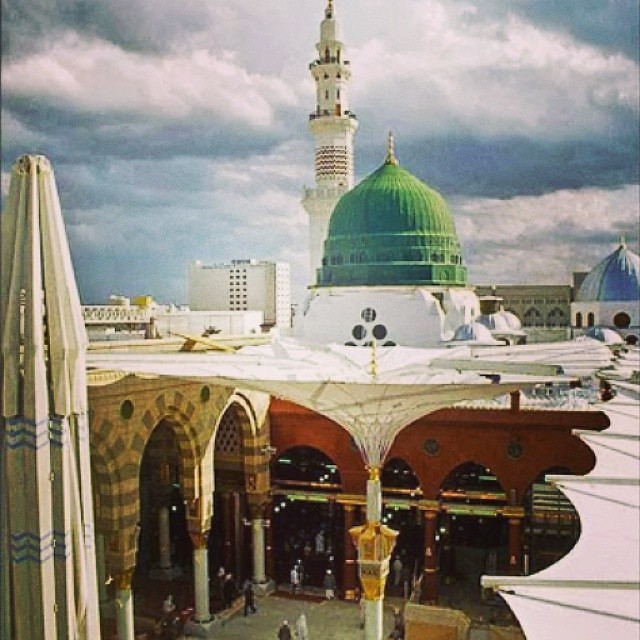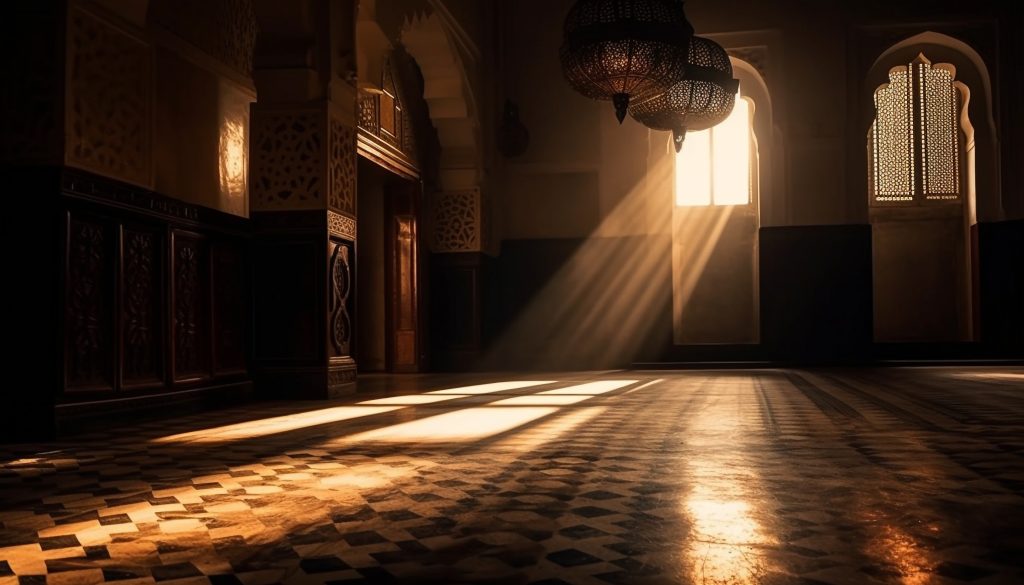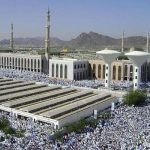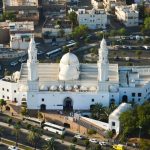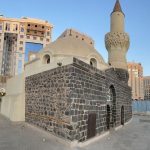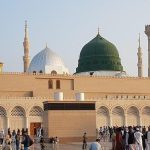Introduction
Welcome to the Umrah International blog! As a travel agency dedicated to providing spiritual journeys for Muslims, we recognize the importance of understanding the Islamic calendar, a vital aspect of Islamic life and practice. In this blog, we will explore the history, significance, and cultural implications of the Islamic calendar, with a particular focus on Muharram, the first month of the Islamic year.
Overview of the Islamic Calendar
1.1 Structure of the Islamic Calendar
The Islamic calendar, or Hijri calendar, consists of twelve months based on the lunar cycle. Each month can have 28, 29, or 30 days, leading to a year that is about 10 to 12 days shorter than the Gregorian calendar. This section will detail the names and characteristics of each Islamic month.
1.2 Comparison with the Gregorian Calendar
This section will compare the Islamic calendar with the Gregorian calendar, highlighting the differences in structure, purpose, and cultural significance. You can include tables and visuals to aid understanding.
Historical Context
2.1 Pre-Islamic Arabian Society
Understanding the Islamic calendar requires knowledge of pre-Islamic Arabian society. Discuss how the Arabs marked time with significant events, such as the Year of the Elephants and the Year of Sadness. Explain how these events influenced the community’s social fabric.
2.2 The Emergence of Islam
Explore the socio-political landscape of Arabia during the time of the Prophet Muhammad (peace be upon him) and how the establishment of Islam required a formalized system of timekeeping.
The Development of the Islamic Calendar
3.1 The Role of Umar ibn Al-Khattab
Delve into how Umar ibn Al-Khattab (may Allah be pleased with him) recognized the need for a formal calendar during his caliphate. Discuss the council he convened to address this issue and the various opinions regarding the starting point of the calendar.
3.2 The Significance of Hijra
Detail the significance of the Hijra (migration) as a pivotal moment in Islamic history. Discuss how it symbolizes not only the establishment of the first Islamic state in Madinah but also the resilience and determination of the Muslim community.
3.3 The Final Decision: Starting the Calendar in Muharram
This section will explore why the consensus was to start the Islamic calendar with Muharram. Discuss the reasoning behind this decision and its implications for the Muslim community.
A Deep Dive into Its Origins, Structure, and Cultural Significance
The Islamic calendar, known as the Hijri calendar, plays a crucial role in the lives of Muslims globally. It serves not only as a means of marking time but also as a guide for religious observances, cultural events, and historical commemoration. In contrast to the Gregorian calendar, which is solar-based, the Islamic calendar is lunar, resulting in a distinctive structure and a unique set of cultural practices.
Historical Context of Year Numbering
Pre-Islamic Practices
Before the advent of Islam, the people of Arabia identified years by referencing significant events. One of the most notable markers was the Year of the Elephant, which refers to a failed attempt by Abraha, the governor of Yemen, to destroy the Kaaba in Mecca with an army of elephants. This event is believed to have occurred around 570 CE, coinciding with the birth of the Prophet Muhammad, making it a pivotal moment in Islamic history.
The Early Hijra Years
In the early years following the Hijra (migration) of Muhammad from Mecca to Medina, years were named based on notable events in the Prophet’s life. These included:
- The Year of Permission: Reflecting the allowance for Muslims to defend themselves.
- The Year of the Order of Fighting: When directives for battle were issued.
- The Year of the Trial: Highlighting the adversities faced by early Muslims.
- The Year of Congratulation on Marriage: Celebrating personal milestones in the community.
- The Year of the Earthquake: Marking significant natural occurrences.
- The Year of Enquiring: Emphasizing the quest for knowledge.
- The Year of Gaining Victory: Celebrating successes in conflicts.
- The Year of Equality: Promoting justice and fairness.
- The Year of Exemption: Discussing rules and allowances within the community.
- The Year of Farewell: The last year of Muhammad’s life.
Establishment of the Hijri Calendar
In approximately 638 CE (17 AH), Abu Musa al-Ash’ari raised concerns about the lack of a systematic dating system for correspondence, prompting Caliph Umar to introduce a formal calendar. After deliberation, it was decided that the calendar would begin with the year of Muhammad’s migration to Medina, marking it as the first year of the Islamic calendar. The month of Muharram was chosen as the starting point, aligning with existing Arab customs.
Structure of the Islamic Calendar
The Islamic calendar is composed of twelve months, with each month alternating between 29 and 30 days. This results in a total lunar year length of approximately 354 days, making it about 11 days shorter than the Gregorian calendar.
Monthly Breakdown
- Muharram: The first month, known for its sacred status and the observance of Ashura.
- Safar: Associated with the events following the Hijra.
- Rabi’ al-Awwal: Celebrated for being the month of Muhammad’s birth.
- Rabi’ al-Thani: A time for reflection and remembrance.
- Jumada al-Awwal: Notable for cultural observances.
- Jumada al-Thani: Continuation of winter and memorials.
- Rajab: A sacred month where warfare was traditionally prohibited.
- Sha’ban: A month of preparation before Ramadan.
- Ramadan: The holy month of fasting and spiritual reflection.
- Shawwal: Begins with Eid al-Fitr, marking the end of Ramadan.
- Dhul-Qi’dah: Another sacred month with a historical significance.
- Dhul-Hijjah: The month of Hajj, culminating in the pilgrimage to Mecca.
Astronomical Factors Influencing the Calendar
The Islamic calendar is fundamentally linked to lunar observations. The sighting of the hilal (crescent moon) determines the start of each month, leading to variability based on geographic and climatic conditions.
The Importance of Moon Sighting
The first day of each month begins at sunset, coinciding with the sighting of the hilal. If the crescent is not visible, the month continues for a full 30 days. This reliance on lunar observations highlights the historical connection between Islamic practice and astronomy, as Muslims have long studied lunar cycles to ensure accurate calendar observance.
Variability Across Regions
Due to the nature of lunar sighting, the Islamic calendar does not align uniformly across different countries. For instance, a new moon may be observed a day earlier in Western countries compared to Eastern ones, resulting in varying dates for religious observances.
Diverse Methods for Month Determination
While many Muslim countries adhere to traditional moon sightings, others, such as Turkey and Saudi Arabia, have adopted calculated methods for determining lunar months. For example, the Umm al-Qura calendar in Saudi Arabia utilizes astronomical calculations for administrative purposes, while Turkey employs specific geometric criteria for lunar visibility.
Theological Perspectives on Calendar Calculation
The use of calculations for the Islamic calendar has sparked considerable debate among scholars. Some argue for strict adherence to traditional methods, while others advocate for a calculated approach that could enhance uniformity across the Muslim world.
Scholarly Opinions
Prominent scholars, including Ahmad Muhammad Shakir and Yusuf al-Qaradawi, have endorsed the use of astronomical calculations, asserting that it aligns with Islamic principles. Conversely, others emphasize the importance of following the traditional sighting methods to maintain the integrity of Islamic practice.
The Islamic calendar is a foundational aspect of Muslim identity, shaping religious observance and cultural practices worldwide. By understanding its historical roots, structural components, and the ongoing debates surrounding its use, we can appreciate its significance in both historical and contemporary contexts. As Muslims navigate the complexities of timekeeping, the Islamic calendar remains a vital guide for spiritual observance and community cohesion.
The Months of the Islamic Calendar
Provide a comprehensive overview of each of the twelve months in the Islamic calendar, including:
- Muharram: Significance and practices associated with it.
- Safar: Cultural beliefs and practices.
- Rabi’ al-Awwal: Importance of the Prophet’s birth.
- Rabi’ al-Thani: Events and historical significance.
- Jumada al-Awwal & Jumada al-Thani: Notable events and practices.
- Rajab: Importance in Islamic tradition.
- Sha’ban: Preceding Ramadan, its significance.
- Ramadan: Fasting and spiritual practices.
- Shawwal: Eid al-Fitr and its importance.
- Dhul Qi’dah: Significance in Islamic history.
- Dhul Hijjah: Hajj and its spiritual dimensions.
The Islamic Calendar: Structure, Significance, and Historical Context
The Islamic calendar, or Hijri calendar, is a vital aspect of Muslim life, guiding religious observances, cultural practices, and social interactions. It is structured around twelve lunar months, distinct from the solar-based Gregorian calendar. This post delves into the details of each month, their significance, and the historical context of the Islamic calendar.
Structure of the Islamic Calendar
The Islamic calendar comprises the following twelve months:
- Muharram
- Safar
- Rabi’ al-Awwal
- Rabi’ al-Thani
- Jumada al-Awwal
- Jumada al-Thani
- Rajab
- Sha’ban
- Ramadan
- Shawwal
- Dhul Qi’dah
- Dhul Hijjah
Key Differences from the Gregorian Calendar
The Islamic calendar is purely lunar, with each month beginning with the sighting of the crescent moon. This results in a year that is approximately 10 to 12 days shorter than the Gregorian year. A new day in the Islamic tradition starts at Maghrib (sunset), in contrast to the midnight start of the Gregorian day.
The Twelve Months: Definitions and Significance
1. Muharram
Definition: The first month of the Islamic calendar and one of the four sacred months.
Significance: Muharram is a time of reflection and mourning, particularly for Shia Muslims, who commemorate the martyrdom of Imam Hussein at the Battle of Karbala on Ashura (the 10th of Muharram). It is considered a month of spiritual significance and a time to seek forgiveness.
2. Safar
Definition: The second month of the Islamic calendar.
Significance: Historically, Safar was a month associated with conflict, but it is now seen as an opportunity for growth and reflection. Some traditions hold that it is a time to avoid misfortune and to seek blessings.
3. Rabi’ al-Awwal
Definition: The third month of the Islamic calendar.
Significance: Rabi’ al-Awwal is notable for being the month in which the Prophet Muhammad (peace be upon him) was born. Celebrations of his birth, known as Mawlid, take place in many Muslim communities, highlighting his teachings and character.
4. Rabi’ al-Thani
Definition: The fourth month of the Islamic calendar.
Significance: While less prominent than Rabi’ al-Awwal, Rabi’ al-Thani is a time for spiritual growth and reflection. It provides an opportunity to continue the celebrations of the Prophet’s life and teachings.
5. Jumada al-Awwal
Definition: The fifth month of the Islamic calendar.
Significance: This month is associated with various historical events in early Islamic history. Muslims are encouraged to engage in good deeds and deepen their understanding of Islam during this period.
6. Jumada al-Thani
Definition: The sixth month of the Islamic calendar.
Significance: Similar to Jumada al-Awwal, Jumada al-Thani offers a chance for self-improvement and reflection. Muslims are encouraged to focus on their relationships with family and community.
7. Rajab
Definition: The seventh month of the Islamic calendar and one of the four sacred months.
Significance: Rajab is a time of spiritual preparation leading up to Ramadan. It is considered a sacred month where fighting is prohibited, and many Muslims engage in extra prayers and acts of worship.
8. Sha’ban
Definition: The eighth month of the Islamic calendar.
Significance: Sha’ban serves as a preparatory month for Ramadan. It is recommended to increase acts of worship during this time, such as fasting and charity, to spiritually ready oneself for the holy month.
9. Ramadan
Definition: The ninth month of the Islamic calendar, known for fasting.
Significance: Ramadan is the most revered month in Islam, marked by fasting from dawn until sunset. Muslims focus on spiritual growth, prayer, and community, culminating in the celebration of Eid al-Fitr at the end of the month.
10. Shawwal
Definition: The tenth month of the Islamic calendar.
Significance: Shawwal begins with Eid al-Fitr, the festival celebrating the end of Ramadan. Many Muslims also observe the Sunnah fasts during this month, particularly the six days of fasting to gain additional rewards.
11. Dhul Qi’dah
Definition: The eleventh month of the Islamic calendar and one of the sacred months.
Significance: Dhul Qi’dah is a month of peace and reflection. Traditionally, it is a time when battles were suspended, allowing for safe travel and trade. It sets the stage for the upcoming Hajj pilgrimage.
12. Dhul Hijjah
Definition: The twelfth month of the Islamic calendar, marked by the Hajj pilgrimage.
Significance: Dhul Hijjah is significant for Muslims undertaking the Hajj pilgrimage, which is one of the Five Pillars of Islam. The first ten days of this month are considered particularly blessed, and many Muslims engage in acts of worship and sacrifice during this period.
Historical Context
The Islamic calendar has deep historical roots, emerging from the socio-political landscape of pre-Islamic Arabia. In a time when tribes relied on significant events for timekeeping, the need for a standardized system became evident as Islam spread.
The establishment of the Islamic calendar during the caliphate of Umar ibn Al-Khattab (may Allah be pleased with him) addressed these challenges. The choice to start the calendar from the Hijra (the Prophet’s migration to Madinah) was pivotal, symbolizing the formation of a united Muslim community and the establishment of the first Islamic state.
The Role of the Islamic Calendar Today
The Islamic calendar plays a crucial role in Muslim-majority countries, particularly in Saudi Arabia, where it is used for official purposes. In other countries, the Gregorian calendar is commonly used for civil matters, while the Islamic calendar governs religious observances. This duality reflects the integration of modern life with traditional practices.
Cultural Celebrations and Practices
Discuss various cultural practices and celebrations associated with each month, highlighting regional differences and traditions within the Muslim world.
Muharram: The First Month of the Islamic Year
The Significance of Muharram
Explore why Muharram is considered a month of great significance, including its status as one of the four sacred months in Islam. Discuss various historical and spiritual dimensions.
The Day of Ashura
Detail the importance of Ashura, the 10th of Muharram. Discuss its significance for both Sunni and Shia Muslims, including the historical events associated with this day.
Reflection and Renewal
Encourage readers to reflect on their lives as the new year begins. Discuss the importance of setting intentions and making resolutions that align with Islamic values.
The Islamic Calendar in Contemporary Life
The Role of the Islamic Calendar in Daily Life
Discuss how the Islamic calendar affects daily life for Muslims around the world, including prayer times, fasting, and religious observances.
Challenges in a Global Context
Address the challenges Muslims face in maintaining the Islamic calendar in a predominantly Gregorian world. Discuss the impact of globalization on Islamic practices and the importance of preserving cultural identity.
Spiritual Reflections and Resolutions
Making the Most of Muharram
Encourage readers to embrace Muharram as a time for reflection and spiritual growth. Provide practical tips for setting resolutions and goals for the new year.
Community Engagement and Charity
Highlight the importance of community engagement and charity during Muharram. Discuss various charitable initiatives that readers can participate in, emphasizing the spirit of giving.
Spiritual Significance of the Islamic Months: Ayat, Duas, and Ahadees
The Islamic calendar is a lunar calendar consisting of twelve months, each holding unique significance and meaning for Muslims around the world. These months are not just markers of time but are imbued with spiritual lessons, occasions for worship, and opportunities for reflection and personal growth. This post aims to explore the significance of each month by highlighting relevant verses from the Quran (ayats), supplications (duas), and sayings of the Prophet Muhammad (peace be upon him) (ahadees). By understanding these connections, we can deepen our faith and enhance our spiritual practices throughout the year.
1. Muharram
- Ayah: “Indeed, the number of months in the sight of Allah is twelve months in the Book of Allah.” (Quran 9:36)
- Dua: “O Allah, I seek Your blessings in this month and protection from all evils.”
- Hadith: “The best fast after Ramadan is in the month of Allah, Muharram.” (Sahih Muslim)
2. Safar
- Ayah: “And if you are on a journey, there is no sin upon you if you shorten the prayer…” (Quran 4:101)
- Dua: “O Allah, guide me in my travels and make them safe.”
- Hadith: “No one has a better faith than the one who has faith in Allah and His Messenger.” (Sahih Bukhari)
3. Rabi’ al-Awwal
- Ayah: “Indeed, Allah and His angels send blessings upon the Prophet.” (Quran 33:56)
- Dua: “O Allah, increase my love for the Prophet Muhammad (peace be upon him) and his teachings.”
- Hadith: “The one who celebrates my birth will have a high status on the Day of Judgment.” (Al-Jaami)
4. Rabi’ al-Thani
- Ayah: “And He it is who created from water a human being and made him [a relative by] lineage and marriage…” (Quran 25:54)
- Dua: “O Allah, strengthen my bonds with my family and friends.”
- Hadith: “The most beloved people to Allah are those who are most beneficial to others.” (Sahih Al-Jami)
5. Jumada al-Awwal
- Ayah: “And whatever good you put forward for yourselves – you will find it with Allah.” (Quran 2:110)
- Dua: “O Allah, make my deeds pleasing to You.”
- Hadith: “Actions are judged by intentions.” (Sahih Bukhari)
6. Jumada al-Thani
- Ayah: “And do good; indeed, Allah loves the doers of good.” (Quran 2:195)
- Dua: “O Allah, grant me the ability to do good deeds and make them sincere.”
- Hadith: “Verily, Allah loves a servant who does a good deed and perfects it.” (Sunan Ibn Majah)
7. Rajab
- Ayah: “Indeed, the months are twelve, and one of them is sacred.” (Quran 9:36)
- Dua: “O Allah, bless me in this sacred month and grant me forgiveness.”
- Hadith: “Rajab is the month of Allah, Sha’ban is my month, and Ramadan is the month of my Ummah.” (Sunan Ibn Majah)
8. Sha’ban
- Ayah: “Indeed, We have sent you as a witness and a bringer of good tidings and a warner.” (Quran 48:8)
- Dua: “O Allah, let me reach Ramadan and help me prepare for it.”
- Hadith: “This is a month where deeds are raised to Allah.” (Sahih Ahmad)
9. Ramadan
- Ayah: “O you who have believed, decreed upon you is fasting…” (Quran 2:183)
- Dua: “O Allah, make this Ramadan a source of mercy and forgiveness for me.”
- Hadith: “Whoever fasts Ramadan with faith and seeking reward will have his previous sins forgiven.” (Sahih Bukhari)
10. Shawwal
- Ayah: “And complete the pilgrimage and the Umrah for Allah.” (Quran 2:196)
- Dua: “O Allah, accept my fasting and grant me success in the days to come.”
- Hadith: “Whoever fasts Ramadan and then follows it with six days of Shawwal, it is as if he has fasted for a lifetime.” (Sahih Muslim)
11. Dhul-Qi’dah
- Ayah: “And complete the Hajj and Umrah for Allah.” (Quran 2:196)
- Dua: “O Allah, grant me the opportunity to perform Hajj if I have not yet done so.”
- Hadith: “The best of deeds is the prayer at its appointed time, and kindness to parents.” (Sahih Bukhari)
12. Dhul-Hijjah
- Ayah: “And proclaim to the people the Hajj.” (Quran 22:27)
- Dua: “O Allah, accept my good deeds and the deeds of those performing Hajj.”
- Hadith: “There are no days on which righteous deeds are more beloved to Allah than these ten days.” (Sahih Bukhari)
Conclusion
Understanding the Islamic calendar is essential for appreciating the rhythm of Muslim life and culture. Each month holds its unique significance, shaping the spiritual and social experiences of Muslims around the globe. As we explore these intricacies, we recognize the importance of the Islamic calendar in guiding our lives, fostering community, and deepening our faith.
At Umrah International, we encourage you to embrace the richness of your faith and the historical significance of the Islamic calendar as you embark on your spiritual journey.


